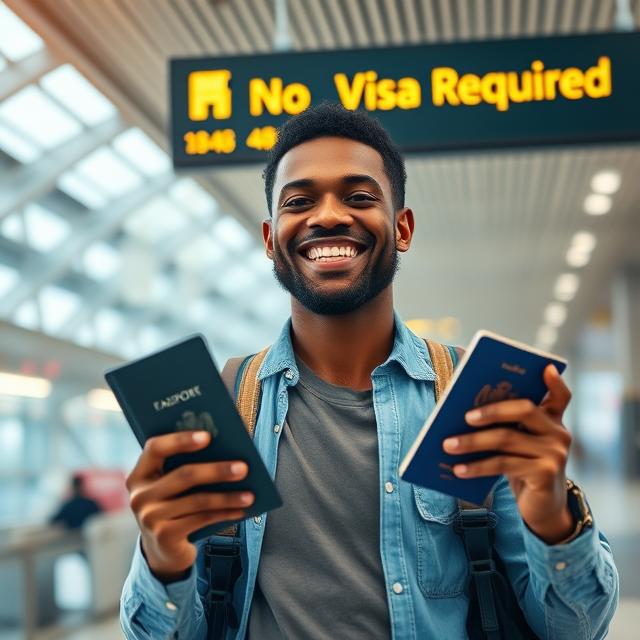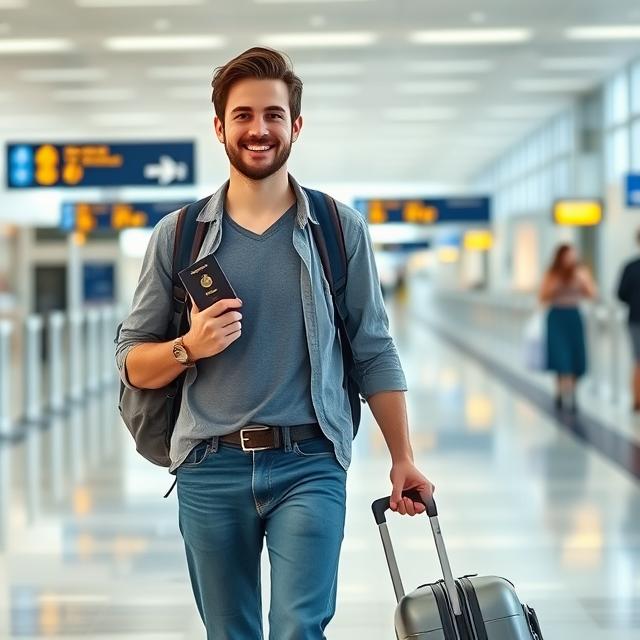How to Create a Winning Statement of Purpose (With Examples) Table of Contents Outline No. Outline Subheadings 1 Introduction What Read more
Top 3 Mistakes Killing Your Visa Approval—Fix Them Fast! Table of Contents Outline No. Outline Subheadings 1 Introduction Why Visa Read more
You Won’t Need a Visa to Travel Here in 2025! Table of Contents Outline No. Outline Subheadings 1 Introduction Why Read more
How to Move Abroad Without Telling Your Boss or Family! Table of Contents Outline No. Outline Subheadings 1 Introduction Why Read more
Table of Contents
ToggleTravel Tips for Norway: Benefits, Advantages, and Your Step-by-Step Guide to Exploring the Country
Why Norway Should Be on Your Travel Bucket List
A Land of Natural Wonders
Norway is like a living postcard—where every turn reveals a scene more breathtaking than the last. Imagine towering snow-capped mountains, crystal-clear fjords, waterfalls cascading down sheer cliffs, and the elusive Northern Lights dancing across the winter sky. It’s not just nature here—it’s nature in its most dramatic, cinematic form. Travelers often say that Norway feels untouched, almost as if you’ve stepped into a secret paradise that the rest of the world forgot to overcrowd. Whether you’re a thrill-seeking hiker, a quiet nature lover, or someone who just wants a peaceful escape, Norway has a unique way of making you feel both humbled and inspired.
Why Norway Stands Out Among Other Destinations
Plenty of countries have mountains, rivers, or coastal towns, but Norway blends them with a rare harmony. It’s one of the few places where you can ski in the morning, cruise a fjord in the afternoon, and dine on fresh seafood by evening—all without feeling rushed. Add in the fact that it’s one of the safest countries in the world, has exceptionally clean air and water, and offers high-quality public services, and you’ve got a destination that’s both adventurous and comforting. Plus, Norwegians themselves have a warm, understated hospitality that makes you feel like a welcome guest rather than just another tourist.
Benefits of Traveling to Norway
Unique Cultural Experiences
Traveling to Norway isn’t just about scenery—it’s about stepping into a culture that values simplicity, nature, and togetherness. You’ll find traditional wooden houses painted in bright reds and yellows, centuries-old stave churches, and Viking history woven into everyday life. Even in modern Oslo, culture is alive through museums, music, and architecture. You can attend traditional folk music festivals in small towns or learn about the Sami people in the Arctic region, who have preserved their language, crafts, and reindeer-herding traditions for centuries.
Clean and Safe Environment
Few countries can match Norway’s commitment to keeping its environment pristine. Streets are clean, litter is rare, and outdoor spaces are treated with respect. Crime rates are low, making it safe to explore both cities and remote nature without constant worry. This peace of mind allows you to focus entirely on enjoying the trip. It’s especially comforting for solo travelers or families with children.
Sustainable Tourism Practices
Norway is a pioneer in sustainable tourism. From eco-friendly hotels to national parks with strict conservation laws, the country is deeply committed to protecting its landscapes. Fjord cruises often run on electric or hybrid vessels to reduce emissions. Even public transportation is designed to be environmentally friendly. As a traveler, you’re encouraged to follow the “Leave No Trace” principles, ensuring that future generations can experience Norway’s natural wonders just as you do.
Advantages for Tourists Visiting Norway
Accessibility and Transportation Infrastructure
Despite its rugged terrain, Norway makes traveling surprisingly easy. Cities are well-connected by trains, buses, and ferries, and the road network is both scenic and efficient. For longer distances, domestic flights are frequent and reliable. The country has also invested in some of the world’s most stunning train routes, such as the Bergen Line and the Flåm Railway.
English-Friendly Communication
Norwegians generally speak excellent English, which makes traveling here far less intimidating for non-Norwegian speakers. Whether you’re ordering food, asking for directions, or checking into a hotel, communication is rarely a problem. This makes it easier to immerse yourself in the culture without feeling lost or isolated.
High Standard of Living and Hospitality
Norway consistently ranks high on the global quality-of-life index, and you’ll feel this during your trip. From comfortable accommodations to well-maintained public spaces, the country takes pride in making daily life pleasant—not just for its citizens, but for visitors as well. Restaurants use high-quality local ingredients, hotels are clean and cozy, and public facilities are reliable.
Best Time to Visit Norway
Summer Adventures (June–August)
Summer is Norway’s peak travel season, and for good reason—the days are long, the weather is mild, and the landscapes are in full bloom. In the Arctic north, you can even experience the Midnight Sun, where daylight lasts 24 hours. This is the perfect time for hiking, cycling, and fjord cruises. Festivals and open-air concerts are also abundant.
Winter Wonders (December–March)
If you’re chasing the Northern Lights or want to enjoy world-class skiing, winter is the season for you. Snow blankets the mountains, creating postcard-perfect scenes. Popular winter activities include dog sledding, snowshoeing, and ice fishing. The darkness in the far north also makes it easier to see the auroras dancing across the night sky.
Shoulder Seasons and Budget-Friendly Months
Spring (April–May) and autumn (September–October) are quieter, more affordable times to visit. You’ll still get beautiful scenery—spring brings wildflowers, while autumn transforms forests into golden-red wonderlands. Tourist spots are less crowded, and you’ll often find better deals on flights and hotels.
Step-by-Step Guide to Planning Your Norway Trip
Step 1 – Research and Decide Your Destinations
Norway’s geography means that destinations can be far apart, so planning your route is essential. Decide whether you want to focus on the fjords, the Arctic north, or the cities. For first-time visitors, a mix of Oslo, Bergen, and one or two fjord regions is a great starting point.
Step 2 – Create a Budget Plan
Norway is famously expensive, so budgeting is key. Factor in transportation, accommodation, food, and activities. Consider booking certain experiences, like fjord cruises or Northern Lights tours, in advance to lock in better prices.
Step 3 – Book Flights and Accommodation
International travelers often arrive in Oslo, with connecting domestic flights to Bergen, Tromsø, or Stavanger. Accommodation options range from luxury hotels to budget hostels and charming guesthouses. Airbnb and cabins are also popular.
Step 4 – Plan Your Transportation in Norway
Decide whether you’ll travel mainly by train, bus, or car rental. Trains are scenic and comfortable, buses reach smaller towns, and cars give you maximum flexibility.
Step 5 – Pack Smart for the Weather
Norwegian weather can change quickly. Even in summer, evenings can be chilly. Pack layers, waterproof clothing, and sturdy footwear. If visiting in winter, bring proper thermal gear.
Top Destinations in Norway You Must Visit
Oslo – The Capital’s Modern Charm
Oslo is more than just an entry point into Norway—it’s a vibrant city where culture, history, and modern innovation come together. Start with the Oslo Opera House, an architectural masterpiece where you can literally walk on the roof for panoramic views of the harbor. Visit the Viking Ship Museum to get a glimpse of Norway’s seafaring past, or explore Vigeland Park, home to over 200 unique sculptures. Oslo is also a paradise for art lovers, with the Munch Museum showcasing the works of Edvard Munch, the painter behind The Scream. Beyond museums, Oslo is dotted with cozy cafés, bustling markets, and waterfront dining spots that let you enjoy fresh seafood while watching boats glide by. The city also offers easy access to nearby fjords, making it an ideal blend of urban life and natural beauty.
Bergen – Gateway to the Fjords
Bergen, often called Norway’s “Fjord Capital,” is a city wrapped in colorful charm. Its UNESCO-listed Bryggen Wharf, with its wooden Hanseatic buildings, feels like stepping into a storybook. Bergen is the perfect base for exploring some of Norway’s most famous fjords, including Sognefjord and Hardangerfjord. A trip up Mount Fløyen on the Fløibanen funicular offers sweeping views over the city and surrounding waters. For food lovers, Bergen’s fish market is a must-visit—you can sample freshly caught salmon, shrimp, and even whale meat if you’re feeling adventurous. Despite its reputation for rainy weather, Bergen’s misty atmosphere only adds to its enchanting character.
Tromsø – Arctic Beauty and Northern Lights
Tromsø is the ultimate destination for Arctic adventures. Located above the Arctic Circle, it’s one of the best places in the world to see the Northern Lights between September and April. But the city isn’t just about the auroras—it’s a hub for winter sports, from dog sledding to snowmobiling. In summer, Tromsø experiences the Midnight Sun, allowing for round-the-clock outdoor activities like hiking and kayaking. The Arctic Cathedral, with its striking triangular design, is an iconic landmark, and the city’s nightlife is surprisingly lively, fueled by students and adventurous travelers.
Exploring Norway’s Fjords and Natural Landscapes
Geirangerfjord – UNESCO World Heritage Site
Geirangerfjord is the stuff of travel dreams—deep blue waters surrounded by towering cliffs and cascading waterfalls like the Seven Sisters and the Suitor. This UNESCO World Heritage Site is best explored by boat, giving you a front-row seat to some of the most breathtaking views in the country. Hiking trails, such as the one to Flydalsjuvet, offer equally stunning perspectives. The area is also dotted with charming farms clinging to impossible mountain slopes, a testament to human resilience in a rugged environment.
Nærøyfjord – Narrow but Stunning
At just 250 meters wide at its narrowest point, Nærøyfjord is one of the most dramatic fjords in Norway. Its sheer cliffs and mirror-like waters create a surreal atmosphere. Kayaking here feels like gliding through a fantasy novel setting. Nærøyfjord is also part of the UNESCO World Heritage list and can be accessed via boat tours from nearby towns like Gudvangen and Flåm.
Hiking and Outdoor Activities
Norway is a hiker’s paradise, with trails ranging from easy coastal walks to challenging mountain climbs. Trolltunga (the Troll’s Tongue) is perhaps the most famous hike, offering jaw-dropping views from a cliff that juts out over a vast valley. For a less crowded but equally rewarding experience, try the Romsdalseggen Ridge hike. In winter, the country transforms into a snowy wonderland perfect for skiing, snowshoeing, and ice climbing.
Norwegian Culture and Traditions
Folk Music, Dance, and Art
Traditional Norwegian folk music, often featuring the Hardanger fiddle, has a hauntingly beautiful sound that reflects the country’s landscapes. Folk dances like the Halling are energetic and full of personality. Art has a strong place in Norwegian culture, with landscapes inspiring countless painters. Edvard Munch is the most internationally famous, but many contemporary artists continue to draw from Norway’s natural beauty.
Local Festivals and Events
Norway celebrates its heritage with festivals throughout the year. Constitution Day on May 17th is a national holiday marked by parades, traditional clothing (bunad), and public celebrations. The Bergen International Festival is a highlight for arts and culture, while the Northern Lights Festival in Tromsø celebrates Arctic music and dance.
Culinary Delights You Must Try
Norwegian cuisine is hearty and rooted in the country’s natural resources. Try rakfisk (fermented fish), fårikål (lamb and cabbage stew), and brunost (a sweet brown cheese). Seafood is exceptionally fresh, with salmon and cod being staples. For dessert, indulge in krumkake, a delicate rolled waffle filled with cream.
Budgeting Tips for Traveling in Norway
Saving on Accommodation
Norway’s high living costs mean hotels can be pricey. Consider budget-friendly options like hostels, guesthouses, or even camping. Many travelers opt for renting cabins (hytter), which offer a cozy, self-catered experience. If you’re adventurous, Norway’s “right to roam” law allows wild camping in most natural areas, provided you follow certain rules.
Affordable Food and Dining Options
Eating out can be expensive, so take advantage of grocery stores and prepare some of your own meals. Chains like Rema 1000 and Kiwi offer affordable basics. Street food, like pølse (hot dogs) and waffles, is also a cheaper alternative. In larger cities, lunch specials (dagens rett) are often more affordable than dinner.
Transportation Hacks
Buy train and bus tickets in advance for significant discounts. Consider travel passes like the Eurail Norway Pass for unlimited train travel within a set period. Ferries between fjords can be bundled with scenic tours for better value. If traveling in a group, car rentals can be more cost-effective than individual public transport fares.
Essential Travel Tips for First-Time Visitors
Understanding Local Etiquette
Norwegians value personal space and tend to be reserved, especially with strangers. A firm handshake and eye contact are standard greetings. It’s polite to remove your shoes when entering someone’s home. Tardiness is frowned upon, so always arrive on time for tours or appointments.
Weather Preparedness
The weather in Norway can change rapidly, especially in coastal and mountain areas. Always check the forecast before heading out and dress in layers. Waterproof jackets and sturdy shoes are a must, even in summer.
Currency, Payments, and Tipping Practices
Norway uses the Norwegian Krone (NOK). Credit and debit cards are widely accepted, and cash is rarely necessary. Tipping isn’t mandatory, but rounding up the bill or leaving 5–10% is appreciated for good service.
Safety and Health Tips
Emergency Numbers and Services
Norway is one of the safest countries in the world, but it’s always good to be prepared. In case of an emergency, dial 112 for the police, 113 for medical emergencies, and 110 for the fire department. These numbers are free to call from any phone. Emergency response times are quick, and most operators speak English. You’ll also find well-marked hospitals and clinics in cities, and even in rural areas, there are small medical centers to handle urgent needs.
Medical Care and Travel Insurance
Norway has excellent healthcare facilities, but as a tourist, you’ll need travel insurance to cover any medical expenses. Without it, treatments can be costly, especially if you require hospitalization or evacuation. If you’re from an EU/EEA country, you can use your European Health Insurance Card (EHIC) for necessary treatment. Pharmacies (Apotek) are common in cities and towns, and most pharmacists speak English.
Staying Safe in the Outdoors
Nature in Norway is breathtaking but can be unpredictable. When hiking, always let someone know your plans and expected return time. Carry a map, compass, or GPS device, and avoid relying solely on your phone, as coverage can be spotty in remote areas. In winter, check avalanche warnings before heading into mountainous terrain. And remember—waterfalls and fjords, while beautiful, can be dangerous if you get too close, so always keep a safe distance.
Sustainable and Responsible Travel in Norway
Respecting Nature and Wildlife
Norway’s landscapes are fragile, and visitors are encouraged to follow the Allemannsretten (“Right to Roam”) responsibly. This means you can explore most natural areas freely, but you must respect the environment. Avoid littering, stick to marked trails, and keep noise levels low to avoid disturbing wildlife. If you spot reindeer or other wild animals, admire them from a safe distance without feeding or chasing them.
Eco-Friendly Accommodation Choices
Many hotels and guesthouses in Norway have embraced eco-friendly practices, from energy-efficient lighting to waste reduction programs. Look for accommodations certified by the Green Key or Nordic Swan Ecolabel. Staying in cabins or smaller guesthouses can also minimize your environmental impact compared to large, resource-heavy resorts.
Supporting Local Businesses
Buying from local artisans, dining at family-owned restaurants, and booking tours with small operators not only supports the economy but also gives you a more authentic experience. Whether it’s handmade wool sweaters, locally caught seafood, or traditional crafts, your purchases help preserve Norwegian culture and craftsmanship.
Transportation Options in Norway
Trains, Buses, and Ferries
Norway’s train network is efficient and incredibly scenic, especially routes like the Bergen Line and the Dovre Line. Buses connect towns not served by trains and are comfortable with free Wi-Fi on many routes. Ferries are essential for crossing fjords and reaching islands, and they’re often part of the adventure, offering stunning water views during the journey.
Domestic Flights and Car Rentals
Given Norway’s long distances, domestic flights can save time, especially when traveling between the south and the far north. Airlines like SAS, Norwegian Air Shuttle, and Widerøe operate frequent routes. Car rentals give you the flexibility to explore remote areas at your own pace, though toll roads and fuel costs can add up. Driving here is generally safe, but be prepared for winding mountain roads and changing weather.
Scenic Routes and Road Trip Tips
Norway is home to 18 National Tourist Routes, each offering unique landscapes. The Atlantic Ocean Road is particularly famous, with bridges that seem to leap from island to island. The Trollstigen route winds through dramatic mountain terrain, with hairpin turns and spectacular viewpoints. Always check road conditions before starting a trip, especially in winter, when some mountain roads close due to snow.
Language and Communication
Key Norwegian Phrases to Learn
While most Norwegians speak excellent English, learning a few basic phrases can enhance your travel experience:
-
Hello – Hei
-
Thank you – Tusen takk
-
Goodbye – Ha det bra
-
Yes – Ja
-
No – Nei
Locals appreciate the effort, even if your pronunciation isn’t perfect.
Using English in Norway
English is widely spoken in cities, tourist areas, and even small towns. Menus, signs, and brochures are often available in English, making navigation easy for international visitors. In rural areas, you may encounter older residents who speak less English, but a smile and simple gestures usually bridge the gap.
Translation Apps and Tools
For occasional language barriers, translation apps like Google Translate or Microsoft Translator can be lifesavers. Download Norwegian offline language packs before your trip so you can use them without relying on mobile data in remote areas.
Final Thoughts – Making the Most of Your Norway Trip
Traveling in Norway is like stepping into a living painting, where every turn offers a view more spectacular than the last. From the urban sophistication of Oslo to the wild beauty of the fjords and the magical Arctic skies of Tromsø, this country delivers an unforgettable mix of nature, culture, and adventure. While Norway can be expensive, careful planning and smart budgeting can make it accessible without compromising the experience. The key is to slow down—Norway isn’t a place to rush through. Take your time to hike, chat with locals, savor fresh seafood, and breathe in the crisp, clean air. Whether you visit in the glow of the Midnight Sun or under a sky shimmering with Northern Lights, you’ll leave with memories that feel like treasures.
FAQs
1. What is the cheapest month to travel to Norway?
April and October are generally the most budget-friendly months, with lower prices for flights and accommodations, though weather can be unpredictable.
2. Is Norway expensive for tourists?
Yes, Norway has a high cost of living, but smart planning—like using public transport, cooking some meals, and traveling in the off-season—can make it more affordable.
3. Do I need a visa to visit Norway?
It depends on your nationality. Citizens of the EU/EEA and many other countries can visit for up to 90 days without a visa. Always check the latest requirements before traveling.
4. What is Norway famous for?
Norway is known for its fjords, the Northern Lights, Midnight Sun, Viking history, and high-quality seafood.
5. Can I see the Northern Lights year-round?
No, the Northern Lights are visible mainly from late September to early April, when the nights are long and dark enough to see them.
How to Create a Winning Statement of Purpose (With Examples) Table of Contents Outline No. Outline Subheadings 1 Introduction What Read more
Top 3 Mistakes Killing Your Visa Approval—Fix Them Fast! Table of Contents Outline No. Outline Subheadings 1 Introduction Why Visa Read more
You Won’t Need a Visa to Travel Here in 2025! Table of Contents Outline No. Outline Subheadings 1 Introduction Why Read more
How to Move Abroad Without Telling Your Boss or Family! Table of Contents Outline No. Outline Subheadings 1 Introduction Why Read more



